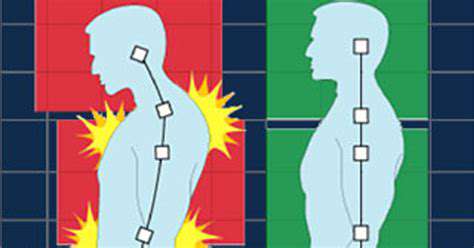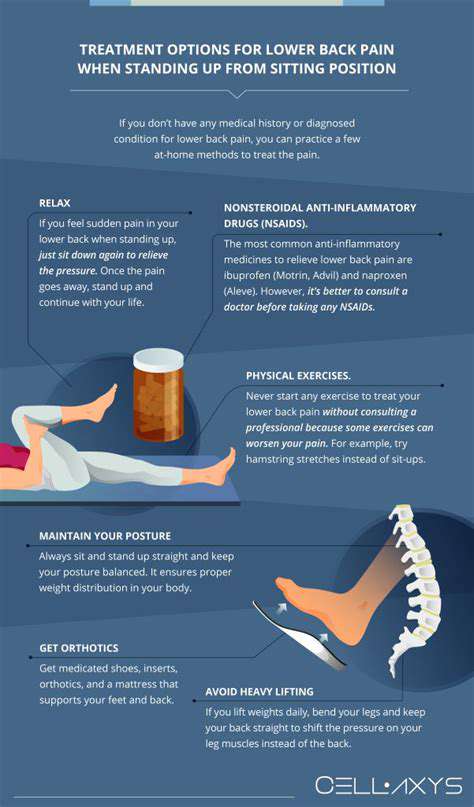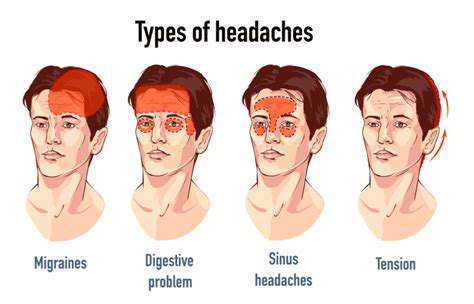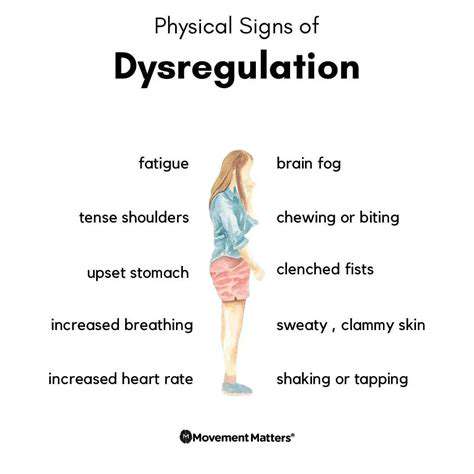Poor Posture: The Hidden Dangers and How to Correct It
Health Consequences of Poor Posture

Understanding Poor Posture
Poor posture refers to the alignment of the body being out of its natural position, which often occurs when sitting, standing, or lying down. This misalignment can stem from several factors, including lifestyle habits, repetitive movements, and even emotional states. Maintaining a correct posture is essential to ensure that the body functions optimally and to avoid the various health issues associated with poor alignment.
When individuals slouch, arch their backs, or tilt their heads forward, muscles and ligaments must work harder to maintain balance and stability. Over time, this extra strain can lead to chronic pain and discomfort, particularly in the neck, shoulders, and back. It is crucial for people to recognize their posture habits as not only a physical issue but also one that affects their overall well-being.
In modern society, with long hours spent sitting at desks or using mobile devices, the prevalence of poor posture has significantly increased. This trend is concerning, as it can lead to compounded health issues over time. Understanding the factors that contribute to bad posture can help individuals develop strategies to improve their alignment and overall health.
The Physical Impacts of Poor Posture
One of the most immediate physical impacts of poor posture is musculoskeletal pain. Discomfort in the back, neck, and shoulders can become constant, leading to a decreased ability to perform daily tasks. Long-term poor posture can also lead to more significant conditions, such as herniated discs or degenerative joint disease.
Additionally, poor posture can impact the body’s internal systems. For example, it may compress organs, limiting lung capacity and reducing the efficiency of the digestive process. This compression can lead to shallow breathing and may contribute to conditions such as acid reflux.
Increased fatigue is another commonly overlooked consequence of poor posture. When muscles are overworked due to improper alignment, the body uses more energy to support basic activities. This can lead to feelings of tiredness and decreased productivity, affecting both physical and mental health.
The Psychological Effects of Poor Posture
Poor posture not only affects the body but can also have psychological ramifications. Studies have shown that slumped postures can lead to feelings of depression and anxiety. When individuals hunch over, they may send signals to their brain which communicates a sense of defeat or low self-esteem.
Conversely, adopting an upright posture can improve mood and boost confidence. Standing tall and proud can enhance self-image and help individuals project a more positive aura, impacting how they are perceived by others. This shift in demeanor can create a positive feedback loop, enhancing both mental and physical outlook.
Moreover, poor posture can influence social interactions. Individuals who exhibit a self-conscious or closed-off posture may be viewed as less approachable. Being aware of one’s body language and posture can greatly influence interpersonal relationships and social experiences.
Strategies to Improve Posture
Improving posture involves a comprehensive approach that includes awareness, exercises, and ergonomic adjustments. The first step is to recognize instances of poor posture, which can often go unnoticed. Once individuals become aware of these habits, they can actively work to correct them by adjusting their alignment throughout the day.
Incorporating specific exercises designed to strengthen core muscles and improve flexibility can play a significant role in correcting posture. Activities such as yoga, Pilates, and strength training can help create a balanced body that is less prone to poor alignment. Furthermore, simple stretches can alleviate tightness and promote better posture during daily activities.
Ergonomics also play a critical role in posture correction. Adjusting chair heights, desk arrangements, and screen positions is crucial for maintaining health while sitting or standing for prolonged periods. Investing in ergonomic furniture can save long-term costs associated with health issues arising from poor posture.
Long-Term Consequences of Ignoring Posture
Over time, neglecting proper posture can lead to chronic pain that persists even after attempting to correct it. Muscular imbalances can occur, meaning that certain muscles may become overly conditioned while others grow weak, leading to further complications. This cycle of pain and discomfort often leaves individuals seeking invasive treatments when preventive measures could have mitigated the issues.
Furthermore, the financial implications are significant. Over time, poor posture may lead to increased healthcare costs for consultations, physical therapy, or surgeries that could have been avoided. Investing time into posture correction efforts can save both money and health in the long run.
Lastly, poor posture can hinder one's physical mobility over time, leading to a sedentary lifestyle that only exacerbates existing issues. Maintaining health and mobility as one ages is crucial, and developing habits early on can lead to a better quality of life later. Ultimately, recognizing and correcting poor posture should be a priority for both personal health and functional longevity.
Identifying Poor Posture

Understanding the Signs of Poor Posture
One of the most common signs of poor posture is slouching. When sitting or standing, people often unconsciously hunch their shoulders and lean forward, which can lead to significant health issues over time. This slouching position can compress the lungs and diaphragm, impairing breathing and reducing oxygen intake. It is crucial to routinely check your posture throughout the day to prevent these detrimental effects.
Another indicator of poor posture is neck and shoulder pain. As the head shifts forward, it places additional strain on the neck muscles and shoulder girdle, leading to discomfort and pain. Regularly experiencing tension in these areas can be a clear sign that your posture needs improvement. This discomfort can ultimately lead to more chronic conditions if not addressed early on.
Fatigue is also a common consequence of poor posture. When the body is not correctly aligned, it has to work harder to maintain balance and stability, which can lead to tiredness. Inefficient posture can exhaust your muscles and energy reserves, making daily activities feel burdensome. It's essential to recognize that fatigue can result from underlying postural problems that may be corrected.
Finally, a noticeable change in your walking pattern may signal poor posture as well. Individuals with poor posture often develop compensatory walking habits, which can eventually lead to uneven gait and further musculoskeletal issues. Consistent awareness of how you walk can be essential in identifying and correcting postural problems, enhancing overall body mechanics and comfort.
Impact of Poor Posture on Daily Life
Poor posture doesn't just affect physical health; it also has psychological implications. Individuals with slouched or closed-off body language often project a lack of confidence. This perception can lead to missed opportunities in both personal and professional settings. Maintaining a strong and open posture can significantly enhance self-esteem and how others perceive you. It's an essential aspect of personal presentation that can influence many areas of life.
Moreover, chronic pain associated with poor posture can adversely affect productivity. Employees suffering from back or neck pain may find it challenging to concentrate on their tasks, leading to decreased efficiency. This cycle of discomfort and reduced output can create a detrimental work environment, impacting personal and team progress. Recognizing this connection is crucial for fostering a healthier workplace culture.
Social interactions can also suffer due to poor posture. Individuals who are uncomfortable in their bodies may withdraw from social situations, impacting relationships and social life. Becoming aware of your posture and making necessary adjustments can help foster positive interactions and better communication with others. Taking steps to address posture issues is not just a personal benefit; it can also enhance social connectivity.
Finally, poor posture can influence overall health, linked to severe conditions like herniated discs, degenerative joint disease, or even gastrointestinal problems. These health complications often stem from misalignment over time, underscoring the need for proactive measures. Preventing these conditions through awareness and correction of posture not only improves quality of life but can also lead to longevity and better overall health outcomes.
Strategies for Improving Posture
Understanding the Importance of Good Posture
Good posture is not just about looking confident; it significantly contributes to overall health and well-being. Poor posture can lead to a myriad of health issues, including chronic pain, fatigue, and even respiratory problems. By understanding how posture impacts our body, we can become more motivated to make necessary changes for improvement.
One of the key aspects of maintaining good posture is spinal alignment. When the spine is properly aligned, it can distribute the body’s weight evenly, reducing strain on the muscles and ligaments. This alignment is crucial for preventing injuries and ensuring that the body can move efficiently, which is especially important for active individuals and those engaging in physical activities.
Furthermore, good posture enhances our ability to breathe properly. When we slouch, our ribs compress, limiting lung expansion and thus reducing oxygen intake. By standing or sitting with a straight back and open chest, we can optimize our breathing, which in turn boosts energy levels and cognitive function.
Practical Exercises to Enhance Posture
Incorporating specific exercises into your routine can substantially enhance your posture over time. Core-strengthening exercises, such as planks and bridges, are particularly effective because they build the muscles that support the spine. A strong core not only stabilizes the body but also encourages a natural alignment of the spinal column during daily activities.
Stretching is equally important when it comes to improving posture. Muscles that are tight can pull the body out of alignment, leading to discomfort and poor posture. Regularly stretching the chest, shoulders, and hip flexors can encourage proper positioning. Yoga and pilates are excellent practices that combine strength and flexibility, making them highly beneficial for postural correction.
Lastly, posture-specific exercises like wall angels or chin tucks can directly target posture-related issues. These exercises are simple and require no equipment, making them easily integrable into any routine. As a bonus, they can often be performed at home or even at the office, providing convenient opportunities for improvement throughout the day.
Building Habits for Better Posture
Beyond exercises, developing good habits is essential for long-term posture improvement. One effective strategy is to set reminders to check your posture throughout the day. This could be as simple as using phone alerts or sticky notes placed around your workspace. By consistently monitoring your posture, you become more aware of your body’s alignment and can adjust accordingly.
Adapting your work environment can also promote better posture. Ergonomic furniture, such as chairs with lumbar support and desks at the correct height, can make a significant difference in your daily posture. Ensuring that screens are at eye level and that your feet can rest flat on the ground can alleviate strain and encourage alignment.
Lastly, consider incorporating mindfulness into your posture correction efforts. Practices such as deep breathing and meditation can enhance your awareness of posture and body mechanics. By being present and conscious of how you hold your body, you can create a mental checklist to maintain good posture, fostering a more profound commitment to your physical health.



